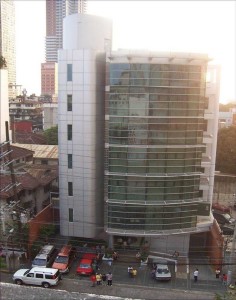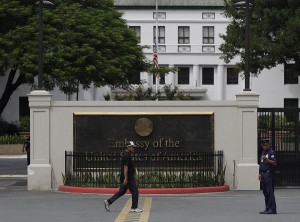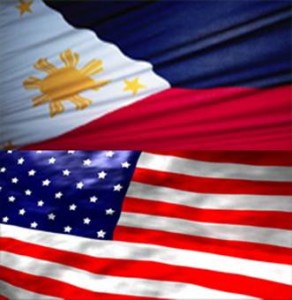Your wife/fiancée will have to do a medical exam at St. Luke’s towards the end of the spousal or fiancée visa process. Governments require this to ensure people don’t come into the country with contagious diseases, addictions or other health problems that would endanger or burden the public.
Helpful tips for the visa medical exam process:
Here’s what she will need to bring:
- 2 copies of her online registration form
- 2 copies of her embassy appointment letter
- 4 2×2 passport/visa photos (color photo with no earrings, etc)
- Her passport and 1 copy of the biographical data page of her passport (the page that has the picture, number, etc).
- 1 ballpoint pen
- Peso equivalent of about $335
Note: Please check out the St Luke’s website to make sure my information is still accurate.

*The exams for those wanting to go to the USA happen at St. Luke’s Medical Center Extension Clinic in ERMITA. Be sure your wife/fiancée knows this because she may think she is supposed to go to the main hospital or one of the other extensions. Note: you can do the exam for some other countries at other locations—just check out the website for more info.
*It is advisable for her to register online and print two copies of her online registration (the website will give you this option once you are registered). This cuts back on the paperwork she has to do once she gets inside the building and it can help her get processed a little more quickly.
*Arrange for her to stay in a Manila hotel for at least two days. I’d recommend booking a room for her at the Casa Bocobo Hotel starting the night before the interview. The prices are reasonable, the hotel is nice (air conditioning, warm shower, wifi, etc.), and it is located literally right down the street from the medical clinic—she can just walk there. She can probably get by with one of their “petite” rooms (the least expensive) if she’s by herself. But all the rooms are reasonably priced. Note: the hotel may require to see a copy of your I.D. and credit card if you pay online. You may need to call them and work that out if she will be going without you.
*Applicants are met on a first come, first serve basis, which is why it is advisable to be there early (registering online doesn’t change this, but those who have registered online may get served a little more quickly once inside). This is why I recommend staying the night before in Manila. People actually start lining up around 3:00 a.m. outside the building. The guards start giving numbers and allowing people in the building at 5:00 a.m. or before. Tell her to get up and be at St. Luke’s a little before 4:00 a.m. (maybe around 3:45). This will give her a good place in line but only about an hour-long wait outside.
 RECOMMENDED: I recommend Christian Filipina for those who are serious about finding love in the Philippines.
RECOMMENDED: I recommend Christian Filipina for those who are serious about finding love in the Philippines. *The guard will ask for the two copies of both the online registration form and appointment letter as well as the copy of the passport upon entering the building. Go ahead and get these ready once the line starts moving. He will give her a number as she goes in. Later they will ask for one copy of the 2×2 pictures at the time of payment.
*She may also want to bring a light jacket. They keep the building very well air-conditioned. It’s also a good idea to bring a book (or a tablet) to have something to do during the waiting periods.
*I won’t give you a play-by-play of the medical exam, but she’ll be going up and down to different floors and spend most of her time waiting for her name/number to be called. She’ll be in there at least 7-8 hours. The staff are pretty organized, efficient, and professional, but they are dealing with an enormous volume of people.
*Advise your wife/fiancee to schedule her appointment when she is not having her menstrual period. If she goes there during her menstruation it will interfere with some aspects of the exam. While on the subject, she should also remember the last day of her most recent period–they will ask her this.
*Check the local (Philippine) holidays to make sure the clinic is open on both consecutive days you want for the exam.
*Some applicants have to get a tuberculosis (sputum) test if they see something abnormal on the x-ray. This will require some follow-up tests/appointments and your fiance/spouse will have to spend more time in Manila (several more days). Those who are coming to Manila from a provincial area may want to prepare in advance for this possibility (bringing more clothes, not booking a round-trip ticket, etc.). She will not be cleared medically until she test negative for tuberculosis. Some applicants have to keep coming back for weeks/months to get re-tested if they have a severe case of TB.
*If the x-ray is clear then she’ll just have to go back the next day for vaccinations—the final step. That’s why I said it is usually a two-day process. Only in rare cases is everything finished in one day. The second day may only take 2-3 hours if all she’s doing is vaccinations. Note: the intercom is weak when they are calling her on day 2 so she’ll have to listen carefully.
*If you (the foreign fiance/spouse) happen to go with her just keep in mind you will not be allowed inside the medical clinic. You can get in line and lead her to the door, but after that you’ll need to go back to the hotel (or mall, or wherever else you’d like). This is another reason to check in at a hotel that is close.
*Lastly I should add something about Ermita/Manila for those who aren’t familiar with it. It is dirty, polluted, noisy and crowded as are many parts of this city. I wouldn’t really classify it as “dangerous,” but one should always be on her guard against snatchers, pickpockets, and other petty criminals. One of the snatchers’ favorite methods is to grab a purse while riding on the back of a motorcycle. Always be vigilant and street smart.
I hope this is helpful. The medical exam isn’t too bad if you are prepared (which includes being prepared for all the waiting).
See Also: The US Embassy Interview


